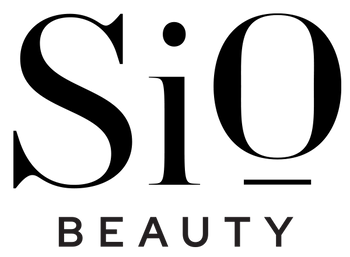Rosacea

Treating Rosacea
Rosacea is a common skin condition that causes considerable redness due to the face’s visible blood vessels. It can also pop up on the scalp, ears, chest, and neck in some cases. It typically starts to surface around the age of 30, but this is not to say it can’t begin earlier in life. Rosacea symptoms include red eyelids (often accompanied by swelling); facial flushing; small, red, pus-filled bumps; and fine red vascular lines. There are currently more than 16 million people in the U.S. who suffer from rosacea, but the number is projected to grow. Unfortunately, the cause of rosacea is unknown, but it can be controlled by the right skincare routine and avoiding triggers.
What is Rosacea?

While rosacea is more evident in those with a lighter skin tone, according to the American Academy of Dermatology Association, people of color can also be affected. However, the redness is replaced with a brownish hue, and the bumps are yellowish-brown versus red. There are four different types of rosacea, each of which has some slightly different characteristics.
-
Erythematotelangiectatic Rosacea: Chronic flushing that’s coupled with visible and enlarged blood vessels. The condition gets worse when there’s a flare-up.
- Phymatous Rosacea: This rare form of rosacea can be characterized by thickened skin that’s prone to scarring, resulting in a puffy, bumpy, and discolored appearance. It mainly affects the nose and is more prevalent in men than women.
-
Papulopustular Rosacea: This type of rosacea is often mistaken for acne because inflamed nodules and pus-filled blemishes accompany facial redness. It can also surface on the scalp, chest, and neck.
- Ocular Rosacea: As the name suggests, this type of rosacea affects the eyes, causing them to look bloodshot and watery. Other symptoms include burning, dryness, sensitivity, and eyelid cysts.
What Triggers Rosacea?

Common rosacea triggers include sunlight, heat, spicy foods, hair spray, and alcohol, but stress takes the lead. A study conducted by the National Rosacea Society found that of more than 700 rosacea patients, 91 percent reported that stress caused their rosacea to flare up. Only 10 percent of the participants indicated that stress rarely affected their rosacea.
Rosacea Skincare Routine Tips

What is the best skincare for rosacea? Anything gentle and soothing.
- Gently cleanse your face twice a day with a mild, soap-free cleanser. Rinse with tepid (not hot or cold water which can exasperate blood vessels) and gently pat (not rub) your face dry.
- Regardless of skin type, you must moisturize day and night. It can reduce irritation and provide comfort to the skin. In fact, it’s been proven that a rosacea-friendly moisturizer can help improve the condition.
- As aforementioned, the sun and heat can trigger a rosacea flare-up — even for those with dark skin. With that said, sun protection with an SPF of at least 30 must be worn daily — even on cloudy, rainy, or snowy days. Wearing sunscreen is an essential healthy skin practice regardless of skin type or concern because it’s the number one cause of aging skin
- For all the skincare products you use, avoid fragrance, menthol, alcohol, camphor, lactic acid, glycolic acid, urea, and sodium lauryl sulfate. They will only cause further irritation to rosacea-prone skin
- If you can’t control your rosacea with OTC products, consider speaking to a doctor about topical products such as prescription-strength Brimonidine (Mirvaso) and oxymetazoline (Rhofade) that help reduce redness by constricting blood vessels. If bumpy, acne-like lesions are the primary concern, then isotretinoin (Accutane, Claravis, etc.), an extremely potent oral acne drug, may be prescribed.
- Another rosacea treatment to consider is laser and light-based therapies. Some examples include Erbium Yag, CO2 (lasers), and Intense Pulsed Light Therapy (IPL) which may help reduce redness, but the results have to be repeated regularly to maintain the results.
How to Rejuvenate Skin

Besides avoiding triggers and using the right rosacea skin care, you can also help treat your skin with a little DIY rejuvenation therapy. Harnessing the power of cold therapy, facial massage, and diamagnetic technology, our SiO Cryo System sculpts facial contours, diminishes puffiness and reduces the appearance of redness (two main symptoms of rosacea), and re-energizes your skin. Simply use the Cryodrop with the SiO Energy serum to execute one of three easy facial massages when you wake up. Other things you can do to give your skin a from-within glow include: exercise, meditation, eating a healthy and balanced diet, drinking enough water, popping a daily vitamin, and getting enough sleep. With a routine like this, your skin will thank you from the inside out.
